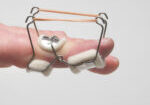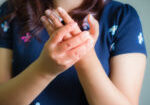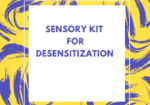Sensory interventions on motor function, activities of daily living, and spasticity of the upper limb in people with stroke: A randomized clinical trial.
Filed under Treatments, Uncategorized
Maryam, D., Parvin, R., Hossein, B., Jalili, M. & Hosein, T. (2020). Sensory interventions on motor function, activities of daily living, and spasticity of the upper limb in people with stroke: A randomised clinical trial. Journal of Hand Therapy, Jun 18;S0894-1130(20)30076-4. doi: 10.1016/j.jht.2020.03.028. Online ahead of print.
The Skinny:
- Stroke is the second cause of death, leading to sensory impairments and motor problems.
- The purpose of this study was to determine if proprioceptive and exteroceptive stimulation would improve outcomes for spasticity and activities of daily living (sensory stimulation activities for stroke patients) compared to traditional therapy in chronic stroke patients (hand therapy for stroke patients).
- Participants were randomly assigned to two groups
Intervention (Group 1):
- Exteroceptive exercises Included: Facilitatory or inhibitory techniques, fast brushing, stretch pressure, icing,
- Proprioceptive Stimulation: Weight-bearing, heavy joint compression, and stretch pressure
- Traditional therapy
Control (Group 2) :
- Traditional therapy
In the Weeds:
- A single-blinded clinical trial comparing the effect of exteroceptive and proprioceptive stimulations in people who have suffered from a stroke. Sixty patients who were are least 6 months post-stroke were divided into two groups intervention (group one) and control (group 2).
- Patients attend therapy 4 days per week for 45-minute sessions for 6 weeks.
- Outcome measures included the Modified Ashworth Scale, Fugl-Meyer assessment of Motor Recovery after Stroke, and Barthel Index. These were completed pre and post-study.
Bringing It Home:
- Patients in the intervention group showed improvements in motor function, activities of daily living, and improvement in spasticity compared to the control group. Adding proprioception and exteroceptive stimulation can improve motor function and ADLs even in chronic stroke patients. These can be added to your traditional therapy regimes.
Rating:
- 4/5
- Limitations: The article did not give a definition of traditional therapy. The sample size is fairly small in number. Long-term follow-up is unknown which would be helpful in determining if the interventions improved long terns outcomes.
More To Read
Management of the Stiff Finger: Evidence and Outcomes
Title: Management of the Stiff Finger: Evidence and Outcomes Reference: Yang, G., McGlinn, E. P., & Chung, K. C. (2014). Management of the stiff finger: Evidence and outcomes. Clinics in Plastic Surgery, 41(3), 501–512. https://doi.org/10.1016/j.cps.2014.03.011 Article Review By: Tommi Hintnaus The Skinny: This study focuses on understanding and managing finger stiffness, a condition characterized by…
Read MoreArticle Review: Relative Motion for Extensor Tendon Repair zone V-VI? Is a night-time resting hand orthosis beneficial?
Hirth, M. J., Hunt, I., Briody, K., Milner, Z., Sleep, K., Chu, A., Donovan, E. & O’Brien, L. (2021). Comparison of two relative motion extension orthotic programs following surgical repair of finger extensor tendons in zones V-VI: A randomized equivalence trial. Journal of Hand Therapy-to be published. The Skinny: Following a zone V-VI tendon repair,…
Read MoreArticle Review: Best Edema Management Techniques in Hand Therapy
Miller, L. K., Jerosch-Herold, C., & Shepstone, L. (2017). Effectiveness of edema management techniques for subacute hand edema: a systematic review. Journal of Hand Therapy, 30(4), 432-446. doi: http://dx.doi.org/10.1016/j.jht.2017.05.011 By: Ammie Ingwaldson The Skinny Edema is something therapists deal with on a daily basis and often is apart of most treatments. Managing edema can be a challenge…
Read MoreSensory Kit for Hypersensitivity
Written by Melissa Miller Introduction After injury or surgery, nerves in the skin and surrounding the injured area can become overly sensitive. This can cause pain or an unpleasant sensation by stimuli that would not typically cause discomfort. For example, a light touch from a shirt or a certain material can feel like needles to…
Read MoreSign-up to Get Updates Straight to Your Inbox!
Sign up with us and we will send you regular blog posts on everything hand therapy, notices every time we upload new videos and tutorials, along with handout, protocols, and other useful information.






